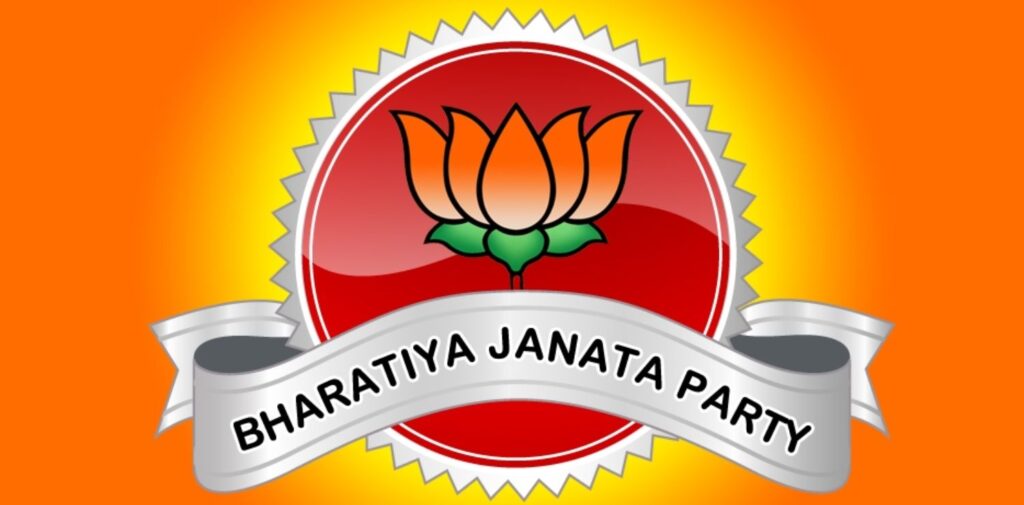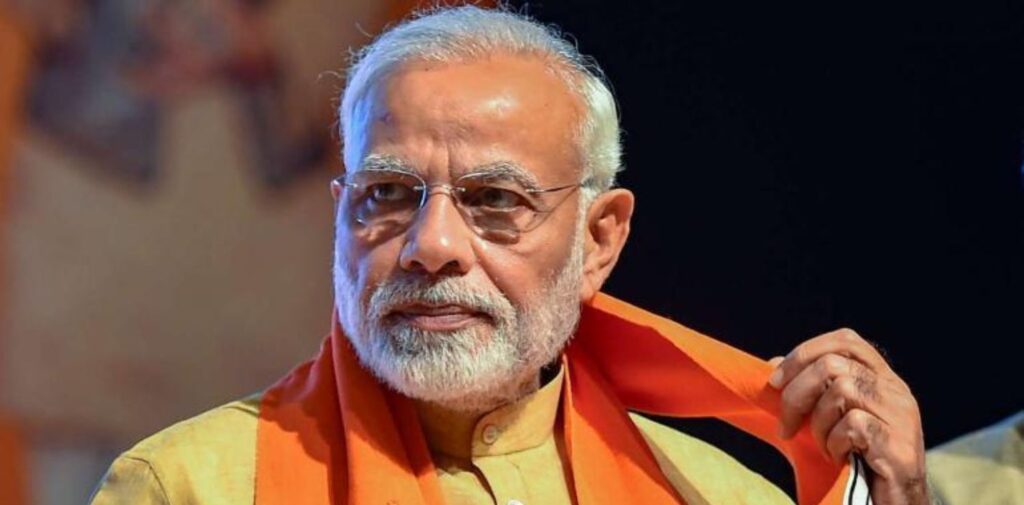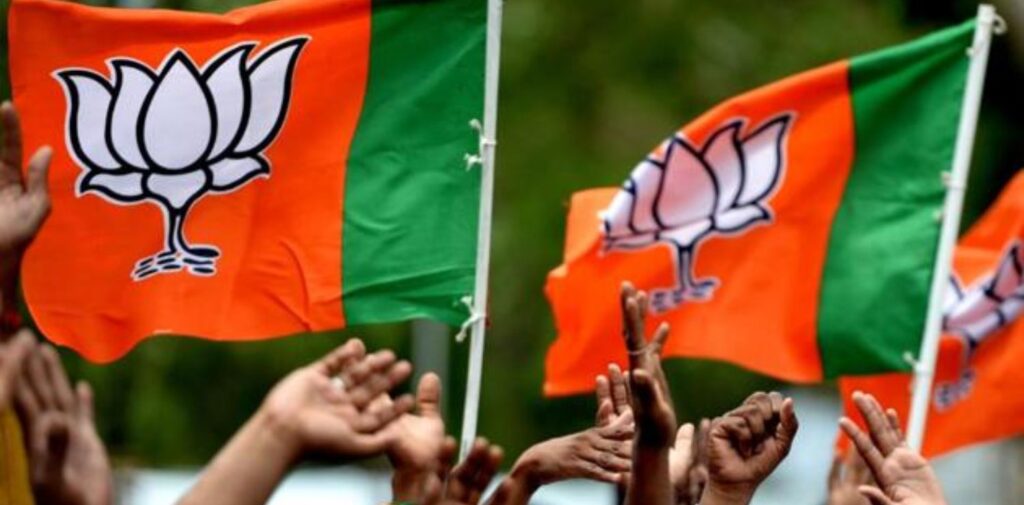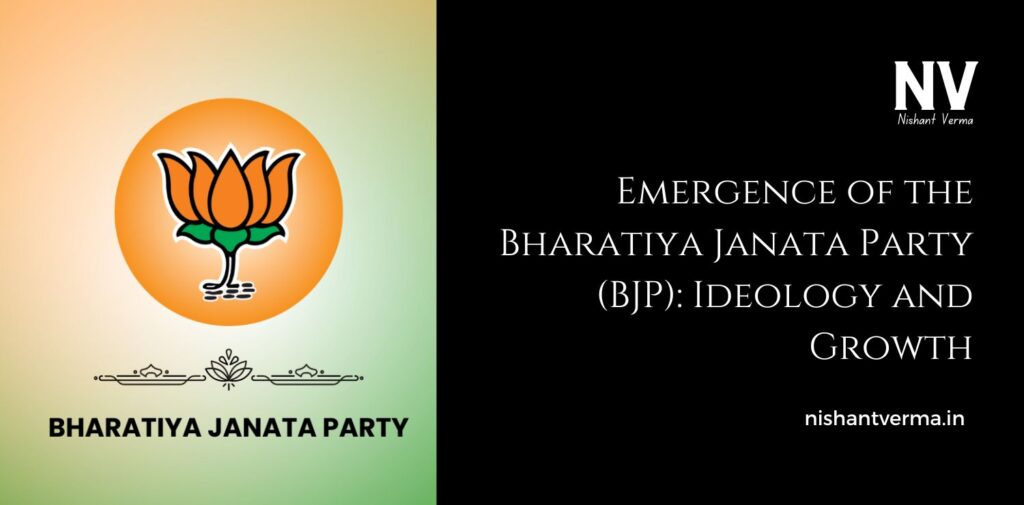In India, the political landscape has seen many changes over the years, and one of the most important changes has been the rise of the Bharatiya Janata Party (BJP). Today, the BJP is one of the largest and most powerful political parties in India. But how did this party emerge? What are its beliefs and ideas? And how did it grow so much in Indian politics? Let’s take a simple journey through the history and growth of the BJP and understand its role in shaping modern India.
What is the Bharatiya Janata Party (BJP)?
The Bharatiya Janata Party (BJP) is a major political party in India. It is often seen as one of the most important and successful parties in the country today. The BJP is a right-wing political party, which means it believes in traditional values, a strong sense of national pride, and supports policies that promote India’s cultural identity. It has been in power in India several times, including with a majority in the Parliament.
But how did this party come into existence, and how did it grow?

The Beginning of the BJP
The BJP was not always known by this name. It has its roots in the Bharatiya Jana Sangh (BJS), which was founded in 1951 by Dr. Shyama Prasad Mukherjee. The BJS was created to promote Hindu values and nationalism, and it stood for the idea that India should protect its culture and traditions. Dr. Mukherjee was deeply concerned about the way India’s identity was being shaped after independence, especially with the growing influence of Western ideas and the challenges posed by religious and cultural differences.
Over the years, the Bharatiya Jana Sangh tried to gain support, but it never became as large or as powerful as the Indian National Congress (INC), which was the dominant party after independence. The BJS was always focused on promoting Hindu nationalism and getting India to stand strong on its own.
In 1977, after the Emergency (a period of political crisis when Prime Minister Indira Gandhi ruled with full power), the Bharatiya Jana Sangh merged with other opposition parties to form the Janata Party. This new party managed to come to power for a short time, but its unity did not last. After the Janata Party split in 1980, the Bharatiya Jana Sangh was revived and became what we now know as the Bharatiya Janata Party (BJP). This was the beginning of the BJP as an independent political party.
The Ideology of the BJP
The BJP’s beliefs are based on certain ideas and values that set it apart from other parties. Here are the main parts of the BJP’s ideology:
- Hindutva (Hindu Nationalism): The BJP believes in the idea of “Hindutva,” which is often translated as Hindu nationalism. This means the party promotes the belief that India’s identity is deeply tied to Hindu culture and values. While the BJP respects all religions, its focus is on strengthening the role of Hinduism in India’s society and politics.
- Nationalism and Patriotism: The BJP strongly believes in a strong and united India. It promotes patriotism, and the party supports policies that encourage people to love and be proud of their country. The BJP wants India to be strong both economically and militarily, and it supports policies that help India grow as a powerful nation.
- Economic Development: The BJP focuses on making India economically strong. It promotes the idea of “Make in India,” which encourages Indian businesses to grow and produce goods within the country. The party also supports the idea of encouraging investment and creating job opportunities for young people. The BJP’s economic policies aim to make India self-reliant and reduce dependence on foreign countries.
- Cultural Pride: The BJP believes that India’s rich cultural heritage is something to be proud of. The party emphasizes the importance of preserving Indian traditions, languages, and art forms. It supports programs that help people connect with their cultural roots and celebrate India’s diverse traditions.

How Did the BJP Grow?
The growth of the BJP was not immediate. It took many years of hard work, struggles, and changing political situations for the BJP to become the major political force that it is today. Let’s look at some key points in its growth:
- The Early Struggles: In its early years, the BJP faced many challenges. The Congress Party, which had played a key role in India’s independence, was still very powerful. The BJP, with its roots in the Bharatiya Jana Sangh, was mainly focused on promoting Hindu nationalism, which was not very popular at the time. The party struggled to get significant support from the people.
- The 1990s and the Rise of the BJP: The real turning point for the BJP came in the 1990s. The party started gaining more support when it raised issues that were important to a large number of people, like the building of the Ram Mandir in Ayodhya, which is a temple dedicated to Lord Ram. The party used these issues to connect with people who felt their religious identity was not being protected by other parties. In 1996, the BJP won a large number of seats in the Indian general elections and became the main opposition party. Although they were not able to form a full government, this marked the beginning of the BJP’s rise to power.
- Victory in 1998 and 1999: The BJP’s big breakthrough came in 1998, when it formed the government under the leadership of Atal Bihari Vajpayee, one of the party’s most respected leaders. Vajpayee became the Prime Minister of India, and the BJP’s policies began to take shape. The BJP’s focus on economic development, nationalism, and cultural pride gained a lot of support. In 1999, the BJP won the general elections again, and Atal Bihari Vajpayee continued as Prime Minister. This was a major achievement for the party, as it showed that the BJP could now lead the government and not just be in opposition.
- The 2000s: Strengthening the Party: In the early 2000s, the BJP worked hard to strengthen its position across India. It built a strong base in states like Uttar Pradesh, Madhya Pradesh, Gujarat, and Rajasthan. The party’s focus on development, economic growth, and strengthening India’s security made it popular with many voters.
- The 2014 Victory: The Rise to Power: The BJP’s biggest victory came in 2014, when it won the general elections in a landslide. The party, under the leadership of Narendra Modi, won more than 280 seats in the Parliament, which was a clear majority. Modi’s promise of economic growth, job creation, and a strong India resonated with the people, and the BJP’s message of hope and development led to their victory. Modi became the Prime Minister of India, and since then, the BJP has continued to play a central role in Indian politics. Under Modi’s leadership, the party has worked to improve India’s economy, make the country more self-reliant, and promote a strong national identity.

BJP’s Impact on Indian Politics
The BJP’s rise to power has had a major impact on Indian politics. It has challenged the dominance of the Indian National Congress and shown that a party based on different ideas, like Hindu nationalism and cultural pride, can succeed in India’s democratic system.
The BJP has also shaped the political environment by promoting the idea of development, national pride, and economic growth. Its leaders, especially Narendra Modi, have become some of the most well-known figures in the country.
Conclusion
The rise of the Bharatiya Janata Party (BJP) is a story of hard work, determination, and connecting with the people’s dreams and aspirations. From its humble beginnings as the Bharatiya Jana Sangh to becoming the largest party in India, the BJP has played a major role in shaping the country’s political and social landscape. Its beliefs in Hindu nationalism, economic development, and cultural pride continue to influence the way India is governed today. The BJP’s growth and success show how political parties in a democracy can grow, change, and become powerful forces in shaping the future of a nation.




